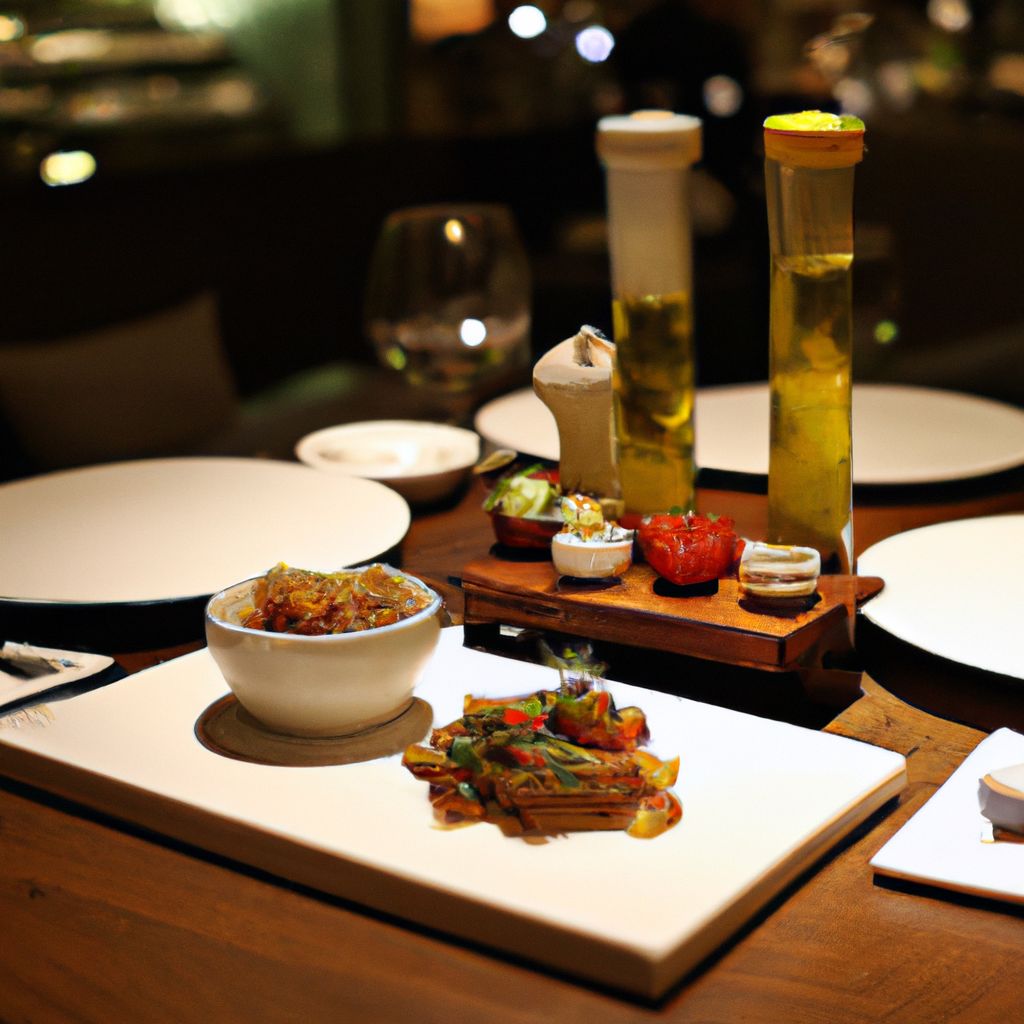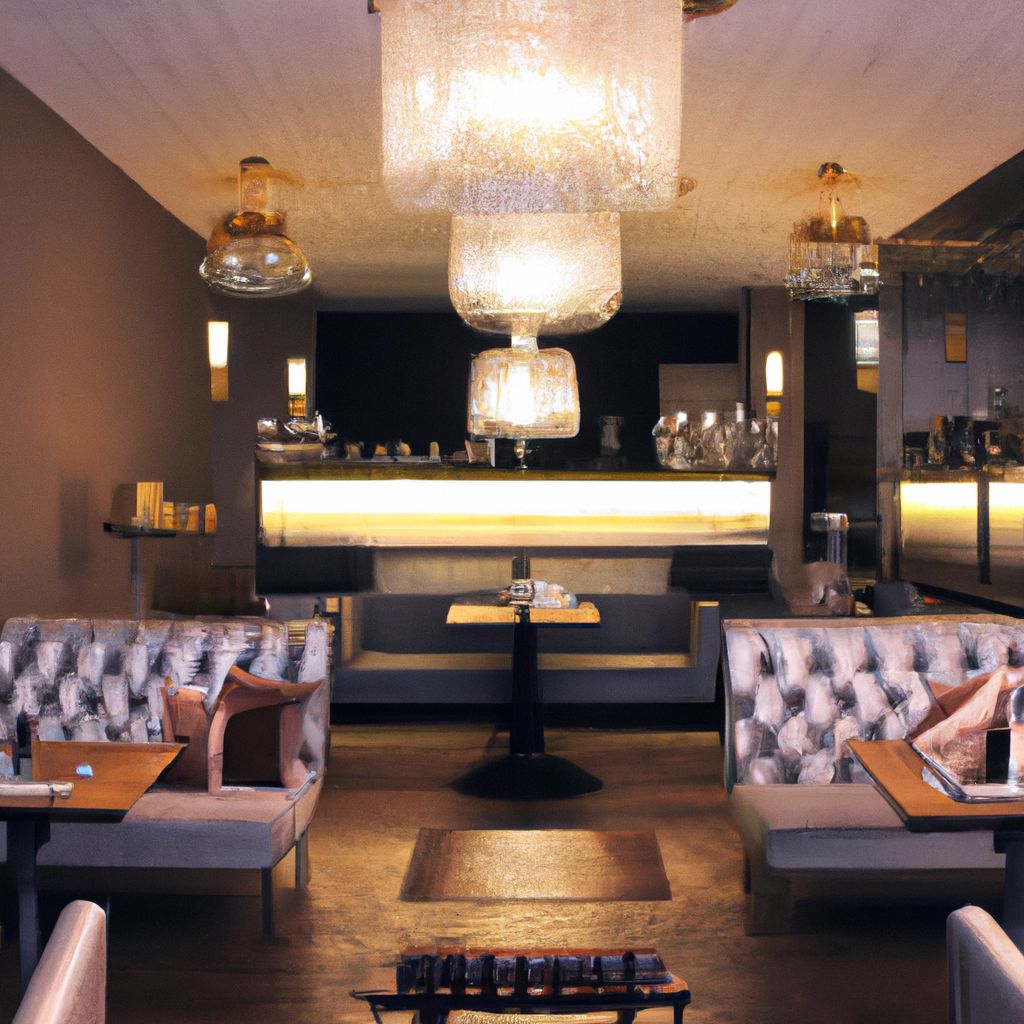.jpg)
Introduction
2020 saw a major surge in restaurant creativity. Memorable campaigns left lasting impressions on customers, transforming dining experiences. From tantalizing social media promos to unique influencer collabs, the industry showed its adaptability.
One standout was ‘The Mystery Menu’. These secret dishes had customers guessing. The element of surprise drew in foodies eager to explore.
Savvy establishments also embraced gamification. Integrating video game elements into promotional activities successfully engaged millennials and Gen Z diners. Interactive apps, leaderboard comps and points rewarded for orders added to the fun.
Some restaurants took VR marketing to a whole new level. Patrons explored virtual replicas of eateries, menu-ing and reserving in a digital environment. Adapting to pandemic limitations, this tech catered to tech-savvy audiences.
The ‘Pay-It-Forward Movement’ brought emotion to the table. Numerous restaurants allowed customers to purchase meals for those in need. This act of kindness instilled hope and solidarity within communities.
Innovative restaurant marketing campaigns altered our expectations of dining out. Restaurants continued to captivate hearts and palates with their remarkable creativity. We await what lies ahead in 2021!
The importance of restaurant marketing campaigns
Restaurant marketing campaigns play an essential role in drawing in new customers, boosting brand recognition, and stirring up excitement around eateries. Not only do these campaigns help restaurants stand out from competitors, but they also help them connect with their target audience.
These campaigns are created to capture attention and spike interest in the food. With more and more dining establishments, it’s a must for restaurants to share their unique advantages with great marketing strategies. Showcasing their specialties, atmosphere, and outstanding service can attract people who will be likely to stay loyal.
Not only do restaurant marketing campaigns lure potential customers, but they also help businesses build relationships with returning customers. Offering exclusive discounts, promos, or loyalty programs can maintain client loyalty and ensure repeat customers. Also, emphasizing customer reviews and positive feedback can improve the reputation of the restaurant.
To make restaurant marketing campaigns successful, certain strategies need to be adopted. Leveraging social media platforms like Instagram and Facebook helps restaurants show off their dishes and interact with customers. Creating user-generated content using hashtags and contests can spread good word-of-mouth about the restaurant.
Moreover, partnering with popular food bloggers or influencers lets restaurants reach more people and gain credibility. Offering unique dining experiences like chef’s table events or themed nights can make customers excited and set a restaurant apart from the competition.
2020 was a big year for restaurant marketing, with campaigns that made us extra hungry (and thankful for delivery)!
Overview of the 2020 restaurant marketing landscape
The 2020 restaurant marketing scene was dynamic and captivating. Creative social media strategies and engaging collaborations allowed restaurants to connect with their audience and drive business growth.
For example, The Kitchen Table launched a #StayAtHomeAndCook campaign. It encouraged customers to embrace cooking at home using their signature recipes and share experiences on social media.
The Wine Bar had a virtual tasting experience, so customers could sample different wines from the comfort of their home.
Green Acres Restaurant featured a Farm-to-Table Series. It highlighted the importance of locally-sourced ingredients and showcased seasonal dishes created by famous chefs.
Restaurants also partnered with food bloggers and celebs for influencer collaborations. This increased their reach and created excitement among potential customers.
For 2021, restaurants can consider personalized dining experiences. Collecting customer data via loyalty programs or surveys can help create customized menus and exclusive promotions. This will strengthen the bond between restaurant and patrons.
User-generated content is also powerful. Encourage customers to share experiences and favorite dishes with designated hashtags. This organic form of promotion builds trust and credibility.
2020 took away dining out options, but the yummy marketing campaigns still left us with a lasting taste!
Memorable restaurant marketing campaigns of 2020
2020 was an unprecedented year for the restaurant industry, but it also brought out some remarkable marketing campaigns. These campaigns showcased the resilience and creativity of restaurants, as they adapted to the new normal. Let’s take a look at some of the most memorable ones:
- Ghost Kitchens: Many restaurants embraced virtual brands and delivery-only operations.
- Virtual Tastings and Cooking Classes: These allowed customers to have a unique dining experience from home.
- Social Media Challenges: Restaurants launched challenges to create buzz and engagement.
- Contactless Delivery and Pickup: This provided convenience and reassurance to customers.
- Promoting Local Produce: Restaurants highlighted dishes made with locally sourced ingredients.
- Charitable Initiatives: Restaurants gave back to the community, building stronger connections.
These campaigns showed how innovative approaches help restaurants stay connected with their customers. And, they reflect broader industry trends – like the rise of online ordering.
Data reveals that 66% of consumers consider ordering food directly from a restaurant’s website or app. 2020 truly taught us that the only thing hotter than a sizzling steak is a brilliant restaurant marketing campaign.
Lessons learned from successful restaurant marketing campaigns in 2020
Rocking restaurant marketing in 2020 was no easy feat! To stand out, restaurants had to get creative and leverage the power of social media, personalization, user-generated content, and influencers. Here are the key lessons to remember:
- Social media can be a powerful tool. Utilize platforms like Instagram, Facebook, and Twitter to showcase offerings, connect with target customers, and create a sense of community.
- Personalize offers and experiences with customer data and preferences. Make customers feel special by recognizing their individuality.
- Generate content by incentivizing customers to share their experiences online. This fosters trust among potential customers.
- Partner with influencers to tap into new audiences and leverage their credibility and reach. Strategically select influencers that align with brand image.
Creativity, authenticity, and customer-centricity are essential for successful restaurant marketing. Incorporate these lessons into your strategies to create memorable experiences and boost business growth!
Future trends and challenges in restaurant marketing
The future of restaurant marketing brings trends and challenges that businesses must face. These factors are key to success in the industry.
Trends:
- Digital Ordering
- Social Media Influence
- Personalized Marketing
- Sustainability Efforts
Challenges:
- Increasing competition
- Rising costs
- Maintaining customer loyalty
- Adapting to new technology
Customers now favor digital ordering, offering convenience and speed. Social media also has a big influence on where people go to eat, so restaurants need to have a strong online presence.
Personalized marketing is a great way to attract customers and keep them loyal, by providing them with promotions based on their individual needs and habits. Sustainability is gaining importance too, as consumers care about eco-friendly practices.
From traditional print ads to modern digital strategies, restaurants have changed how they reach their audience over time.
This article explored the most remarkable restaurant marketing campaigns of 2020 – the perfect ending to a tasty journey!
Conclusion
In 2020, restaurant campaigns left a mark. These strategies engaged customers through multiple channels, showing the industry’s flexibility. Creative challenges, heartwarming collaborations, and inspiring marketing tactics were seen.
A fast-food chain initiated a special campaign. To make use of virtual trends during lockdowns, they organized an online cooking class with their chef. People could make signature dishes from their homes while connecting with others through video conferencing. This created buzz and a sense of community.
Another noteworthy campaign was from a local restaurant. They started a “Pay It Forward” initiative, where meals were bought for healthcare workers and responders. Through creative stories, they showed the stories of recipients and their efforts in keeping people safe.
An upscale restaurant used virtual reality dining. Customers were taken to various destinations as they enjoyed a menu and visuals. This revived dine-in experiences and pushed traditional restaurant marketing limits.
A small family-owned establishment did a surprising marketing journey. With limited resources, they made postcards thanking loyal customers. These personalized messages were well-received and got attention on social media.
These campaigns of 2020 showed that creativity can overcome adversity. Success lies in connecting with customers, inspiring engagement, and creating a community within the dining experience. Let’s remember these examples and keep innovating in restaurant marketing.
Frequently Asked Questions
FAQ:
1. What is the purpose of a restaurant marketing campaign?
A restaurant marketing campaign aims to promote and advertise a specific restaurant, attract customers, and increase brand awareness. It helps in showcasing the unique selling points of the restaurant and encouraging potential customers to patronize the establishment.
2. Can you provide examples of successful restaurant marketing campaigns in 2020?
Yes, here are a few notable examples:
- McDonald’s “Stay Home” campaign, which emphasized their commitment to safety during the pandemic.
- Dominos’ “Contactless Delivery” campaign, highlighting their hygienic and safe food delivery options.
- Chipotle’s “Burlidays” campaign, offering special deals and discounts during the holiday season.
3. How do restaurant marketing campaigns impact customer behavior?
Effective restaurant marketing campaigns can influence customer behavior by creating a desire to try new dishes, visit specific restaurants, or take advantage of promotions and discounts. They can also shape customer perceptions of a restaurant’s brand, quality, and overall dining experience.
4. What are some key elements of a successful restaurant marketing campaign?
Key elements of a successful campaign include:
- Target audience identification and segmentation
- Compelling and memorable messaging
- Strategic use of various marketing channels
- Engaging visuals and storytelling
- Measurable goals and metrics for tracking success
5. How can a restaurant measure the effectiveness of a marketing campaign?
Restaurants can measure the effectiveness of a marketing campaign through various methods, such as:
- Tracking sales and revenue during the campaign period
- Monitoring website and social media analytics, including engagement and conversion rates
- Conducting customer surveys and collecting feedback
- Comparing the campaign’s success to previous marketing efforts
6. Can small/local restaurants implement successful marketing campaigns?
Absolutely! Small and local restaurants can implement successful marketing campaigns by focusing on their unique selling points, connecting with the local community, and leveraging cost-effective marketing channels such as social media, partnerships with local influencers, and customer loyalty programs.



